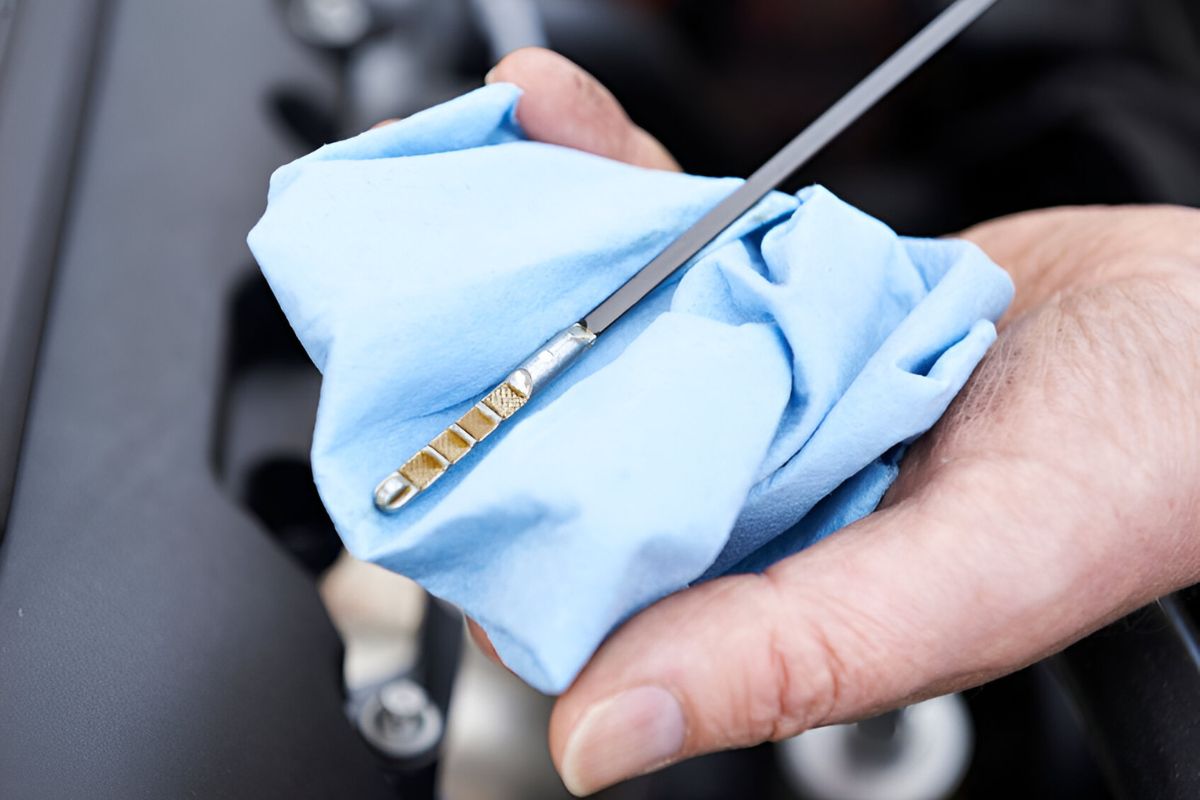The health of your car greatly determines the amount of time that will pass before it rusts or breaks down. Among other things, a regular car check-up involves, a timely oil change remains one of the most important routine car care practices. But how does a new car sense when it is due for an oil change? This is where the world of Autotronics—the integration of automotive and electronics—takes centre stage.
In essence, various sensors, processors, and software are integrated into the system of an automobile to monitor key functions. For example, concerning oil change notifications, current sophisticated vehicles use a combination of high-tech sensors, data analytics, and software to inform motorists that their engine oil has gone up to a particular level of wear and tear and requires a change.
In this blog, we discuss the technical aspects of oil change detection—the sensors, how data is processed, and indeed where Autotronics fit into the framework.
Why Oil Changes Matter
Prior to investigating how vehicles sense the quality of oil, there is a need to realise the reason why oil changes are essential for the exhibition of your vehicle. Motor oil has significant capabilities in keeping up with the prosperity of your motor.
- Lubrication: Oil prevents friction between moving parts within your engine, thus preventing wear and tear. It also assists in cooling the heat produced by moving components within the engine whenever it is in use.
- Prevents Corrosion: It lays a coating that prevents corrosion in the parts of the engine.
The oil, however, breaks down with time as high temperatures cause contamination. The old oil fails to offer optimal performance. Old oil leads to overheating of engines, fuel efficiency drops, and even serious damage to your engine if not changed on time.
Detection of Car Sensors on Oil Condition
Modern cars come equipped with sensors that check the status of a car’s engine oil by passing on signals through so many parameters. Some of the parameters those sensors might show include the following:
- Oil Level: Simple level sensors ensure there is adequate oil within the engine to function properly.
- Oil Temperature: Exceptionally high temperatures of oil might show that the oil has lost its adequacy in greasing up the motor.
- Oil Pressure: Sensors measure the power applied to the oil as it moves around the motor; this should be accessible for legitimate oil.
- Oil Viscosity: Sensors indirectly measure oil viscosity, which increases and decreases due to ageing or exposure to contaminants.
The data obtained from these sensors is processed through the car’s ECU or a dedicated OLMS to ascertain the current state of oil. This allows the system to anticipate how long it will take before oil needs to be changed.
Oil Life Monitoring Systems
Most present cars are equipped with the Oil Life Monitoring System (OLMS) that predicts when changing time has come for its oil. OLMS work is typically based more on real-time data than mileage-based approaches to give proper alerts.
Types of OLMS:
- Fixed-Interval Systems: These systems follow a priori intervals, for example, every 3,000 or 5,000 miles. They are convenient, but variations in conditions and oil do not count for the system.
- Algorithm-Based Systems: They are highly sophisticated and consider multiple variables that involve driving conditions, engine load, temperature, and use of the car generally. Then, if such variables are taken into consideration, the OLMS can have a better approximation of how the oil is being used.
In an algorithm-based system, the car’s computer continuously analyses the condition of the oil against a preset “ideal” condition. It will let the driver know when the condition has come to a certain point of deterioration, and it is time for a change.
Autotronics in Oil Change Detection
Autotronics, electronics integration in the automobile world, is at the core of what vehicles monitor concerning the conditions today. The following components and technologies are critical in enabling the detection of oil change:
- Engine Control Unit (ECU):
The ECU is the brain of the car. It collects information from various sensors and runs this against the pre-programmed algorithms to interpret it. As far as oil change detection is concerned, the ECU does consider factors such as the engine temperature, driving habit, and oil pressure, and it summarises them to infer oil health.
- Oil Quality Sensors
These sensors can sense oil degradation because they measure the dielectric constant of the oil. This oil breaks down and gradually becomes dirtied with fuel; its dielectric properties change as this happens, and thus, it can sense when it’s time to change it.
- CAN Bus System
This system communicates the various sensors and parts of the car with each other; the CAN bus is the system. In the case of oil monitoring, the ECU will process data in real-time from sensors by receiving it via the CAN bus.
- Oil condition algorithms
These algorithms are a byproduct of Autotronics, where both past and present data have gone into the computation for how much more life is left inside the engine oil. Among the metrics are short trips, starting under cold conditions, and time spent idling—factors that have hastened the degradation of the oil.
Sushen Mohan Gupta: Driving Innovation at Deva Autotronics
Sushen Mohan Gupta, the ultimate visionary CEO of Deva Autotronics, is reshaping the future of the automobile with technologies in sophisticated electronic progress. Under his guidance, Deva Autotronics has brought a sea change in the way modern automobiles monitor critical functions such as oil health. Having an in-depth understanding of Autotronics, Sushen has focused on incorporating leading-edge sensors, artificial intelligence, and machine learning into vehicle systems to enhance driver convenience and vehicle performance in equal proportions. His company’s solutions make it possible to have real-time monitoring of oil conditions, thereby removing guesswork about vehicle maintenance. As discussed in our blog, innovations in oil life monitoring are going to be paramount for improving vehicle efficiency, safety, and longevity; Deva Autotronics is playing an imperative role in shaping this smart automotive future.
Wrapping Up!
It revolutionised oil monitoring with the inclusion of Autotronics in vehicles. You are no longer relying on mileage alone to determine an oil change since sensors, ECUs, and most importantly, superior algorithms are already the standard in modern vehicles. It can already warn you when it is time to have your oil changed—an important way to keep your engine at its best and longer-lasting.
With increasing technology, the future system may become even more precise in using AI for more intelligent real-time insights on how healthy your car is. However, as it stands now, the current oil life monitoring systems are safe, not pricey, but efficient in holding their user’s vehicle.
Autotronics usage in the actual detection of oil changes allows motorists to understand how sophisticatedly their cars work in maintaining the condition.






